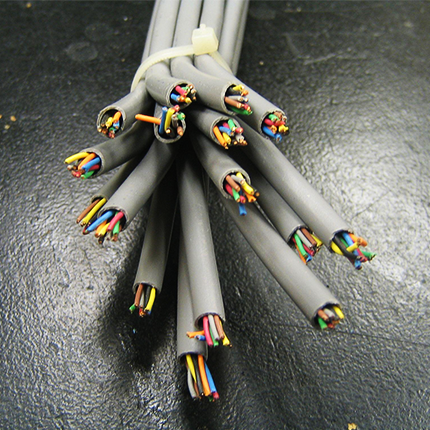I use my desktop PC for Jellyfin and torrenting, but I’m looking for something that I can keep on 24/7 that draws less power and run other self-hosted services on Linux. I would like to have at least 2x 14 TB 3.5" hard drives in or attached to it with the possibility of expanding in the future.
From my research, these seem to be some good options:
- Mini PC like this Beelink S12 Pro + USB hard drive enclosure. The price seems reasonable for the specs and low power consumption. Not sure if USB will limit transfer speeds.
- ODROID HC-4 or similar SBCs. I feel like these have much lower performance for not much price savings, and it’s harder to get software running up because of ARM. But it seems like they don’t use too much power.
- Used enterprise PCs/servers. I know they can be found cheap used, but I’m a little lost at comparing the performance and power draw to other options.
- DIY build. I’m interested in getting a Mini-ITX case like this Jonsbo N2 and getting parts for it, but it seems like it will be the most expensive option. It does seem like the most modular and upgradable.
- Classic NAS products like Synology. It seems like these are falling out of favor because they are pretty under powered for the price.
What does selfhosted think about these options, and what would you recommend?
Depending on power prices in your country I would take that into strong consideration, while some server or desktop grade hardware might be technically very good, they often have high idle power consumption without offering greater functionality.
Take a look at this German Forum Post: https://www.hardwareluxx.de/community/threads/die-sparsamsten-systeme-30w-idle.1007101
They also have this google sheet: https://goo.gl/z8nt3A
Yeah, the power prices in my city are really high (USA). They’re even higher than Hawaii, from what I’ve heard. That’s why I’m leaning towards the mini PCs and SBC options, even if used server/desktop parts have better performance for the price.
My $0.02c worth - I have run all sorts of servers at home over the years, and one of the main challenges around the hardware is managing heat.
I’ve used mini-ITX mobos and tiny cases for builds. They look gorgeous, but at some point, when you stick enough drives in there (assuming you can) or make the CPU/GPU busy, you are going to have a heat problem, or a noise problem, or both.
On my mythtv build I used M-itx and a gorgeous Lian Li small case. It was a beautiful add to my home theatre stack, but in the end I drilled a ton of small holes in the top and added a slow 140mm fan to control the heat without noise.
The same goes for my file server - it was a slightly larger case with no GPU, but once I added my 6th HDD and had a ton of services running, heat became an issue and I was having to add extra fans, which could only be 80mm so they ran fast and noisy.
My new build I’m going to go all the way with a Phanteks Enthoo Full Tower and a few 120mm fans. I’ve decided that looks don’t matter
The other problem for me with these tiny builds is cable management. I’m complete shit at it, and small builds requires some skills. A big case gives you space to spread those cables out.
Lastly, you can get ATX or EATX mobos with 6, 8 or more SATA connectors - room for growth! And there are very low power options available.
I’ll soon have the appleTV + TV upstairs, laptop in the office, and the monster server downstairs with cat-6 + Gb fibre throughout.
I’ve been getting pretty excited about RISC-V devices. They are quite efficient and outstrip similiar SOCs in many ways.
The Lichee Pi4A has better benchmarks than a Raspberry Pi 4 at a TDP of 4W and includes a NPU. They are coming out with a cluster board as well.
Cristopher Barnatt does a review of it here: https://www.youtube.com/watch?v=1apoFXZ9ad8
Since Debian has added RISC-V as a supported architecture, we should start seeing most major software like Docker and KVM being packaged for it. If not, it can be compiled too.
There’s an old adage for cars that I think applies to home servers.
Fast, Cheap, Reliable. Pick two
In my experience, SBCs take a whole lot more tinkering than I like to do. I bought a cheap matx motherboard and a second hand ryzen 2400g which has served me well. Inside a second hand htpc chassis with an ssd for the os and a couple hdds for storage. It even has a 5.25" bay I can install a drive for ripping. I’d rubbing OpenMediaVault with Docker for Sonarr/Radarr/Overseerr/Nextcloud etc.
It’s probably not the cheapest to run, but it was cheap to buy and it’s very reliable because it’s based on x86 so the support will probably outlast me.
I had a 10Gbps USB Icy Box enclosure, speeds were ok but cooling was simply inadequate. Now I have just built a pc with an Asus B550-Plus and a 5600G, idles at 19W with the drives in standby but with three fans active. I thought about going with a mini pc and a better external enclosure, but that would’ve been much more expensive and I doubt that I would’ve saved that much power with that anyway
I recently got the Beelink Mini S12 Pro. I’m completely impressed with its capabilities, especially for that price. I got the 16GB Ram N100 version. Great piece of hardware.
I’m running 27 different services, including the *Arrs, Jellyfin, paperless-ngx, home assistant, and even stuff like Kasm workspaces and emulatorjs.
I’m seriously thinking of getting this. Maybe the Firebat brand though as it has two Ethernet ports and it’s cheaper for me.
Have you had Pi’s? I’m currently using a pi4 4gb and wondering how it compares.
I’m also frustrated with arm as a lot of docker images aren’t working. Recently had issues with Hugo and Jekyll which needs node.js that doesn’t support arm at this version.
Have to tried Immich on it?
Yes, I have a Pi4 2GB, it’s still working as a second pi hole node. That’s what got me into the world of self-hosting, but 2GB is not enough for a lot of things. I went from that to a N100 with 16GB of RAM, so the difference is huge and I think it’s totally worth the money.
I haven’t tried Immich, but I probably will once I have a better solution for storage.
It’s up to you how much you want to pay vs. how much time you are willing to sink into it. A synology is overpriced and underpowered, but you get a nice plug and play solution eith sane defaults. I went with that, fully knowing that price-wise, it’s not optimal. But I don’t enjoy tinkering as much as I used to.
Is there some low-power hardware that takes ECC RAM? I want something to replace my Atom mini-ITX board, but I also want ECC.
- Mini PC if you want small hardware that can be bought for cheap second hand, my recommendation goes for HP;
- ARM SBC if you’re crazy about power consumption and you don’t care about having potentially unstable systems and/or spend the same as a second hand mini pc in extras like a case, power supply, adapter for this and for that;
- DIY build with a micro-ATX or micro-ATX board if you’ve the space for it. You can a very powerful machine for less than. Check one of mine here https://lemmy.world/comment/2676457 ( i5-7400 + 8GB RAM + Board for 70€ second hand)
To be totally direct, SBCs are cool but are a waste of money. You won’t able to get anything with a decent CPU for less than 120€ considering all the accessories they require and at that price range you can get HP or Dell mini PC’s (i5 6th generation) that are WAY more stable and powerful with everything out of the box. Those machines can be found with mobile CPUs so they won’t waste power.
If you want x86-64 support in fanless, take a look at Celeron (low powered) based industrial PCs. Qotom comes to mind. You can get a passively cooled machine. Most come with a NVMe and 2.5 slot for storage, do doing raid 1 is possible without external storage. I’ve bern running my J1900 based one for nearly 5 years and haven’t had an issue with hardware at all.
Do you have a NAS? It can be a good way to get decent functionality without extra hardware, especially if you’re doing proof of concept or temporary stuff.
My self-hosting Docker setup is split between 12 permanent stacks on a Synology DS920+ NAS (with upgraded RAM) and 4 on a Raspberry Pi 4B, using Portainer and its agent on the Pi to manage them. The NAS is also using Synology’s Drive (like Dropbox or GDrive) and Photos (like Google Photos).
I’ve had the NAS running servers for Valheim and VRising in the past, but they require that fewer containers be running, as game servers running on Linux usually have no optimisation and/or are emulating Windows.
If I decide to host a game server again, I’ll probably look at a NUC. I’ve done the DIY mini-ITX route in the past (for an XBMC-based media centre with HDMI output) and it was great, so that’s another option.
I have a DIY NAS… Not sure of specs any more. Some micro-atx board with a cheaper AMD CPU. All it’s for is an NFS share and I use almost no resources on it.
I have a bunch of PI4 8GB and lenovo m92p tinys that I use for the compute. Their storage is the DIY NAS.
If I was starting out and planned on growing m’y setup, id go option 4. Just do an all in one thing, run everything on it. When you run out of ram/CPU consider a pi or mini like I have. When you need more disk, add it into the NAS.
If you just want something simple option 1. USB will 100% limit transfer speed but what kind of speed do you actually need? What will you run?
Is your NAS in an old tower PC?
I think I had the misconception that USB was slower than SATA, but USB-C is actually just as fast. And anything USB 3.0+ should be faster than 1 gigabit ethernet I guess?
Theoretically, USBC 3.1 has 10Gbit/s from what I’m reading so it sounds like you’re right. My concern is the chipset on the MoBo, how many lanes it has, and what it supports. I haven’t looked into it but I bet this is the limiting factor. Especially if you’re adding a lot of USB devices.
Yep, just an old PC that I moved into a case with hotswap hard drive bays. I also bought a LSI 9300-8i to support the hard drives.






